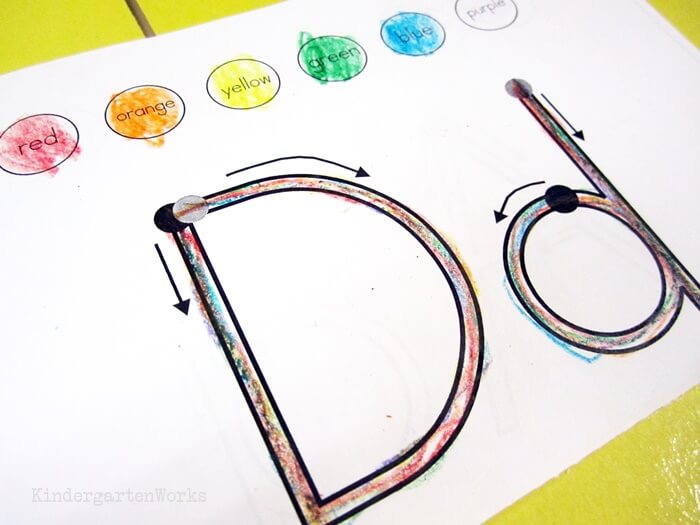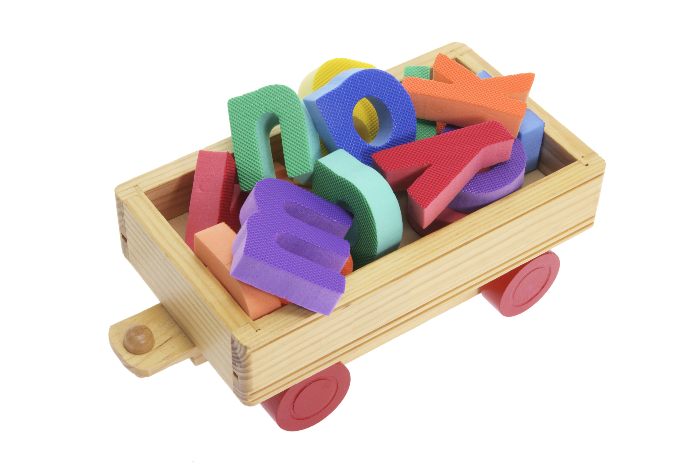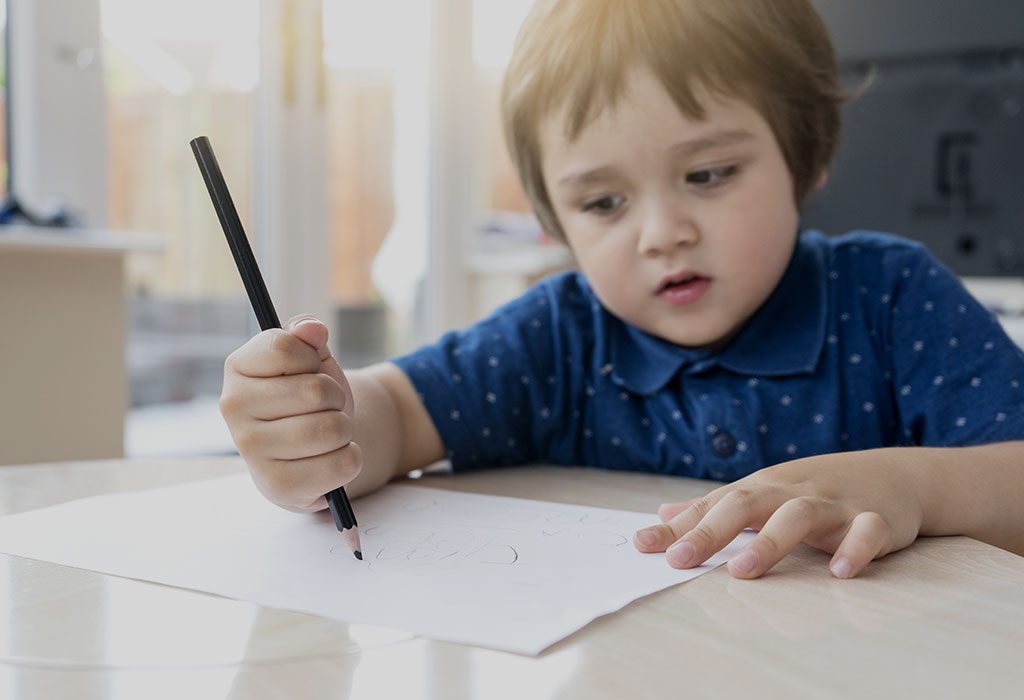There are a few skills that we have gradually learned since childhood. Can you recall how you began to write the name when you were a kid? We all know that learning to write a name is a crucial skill for a child’s early development. This is because it helps them communicate their identity and lays the foundation for language and cognitive abilities.
Also, a name signifies a particular person or a thing, and writing it gives a unique shape to it. As parents, caregivers, or educators, we play a major role in shaping the little one to live in this world peacefully. Moreover, writing is also a form of expression, and it becomes of utmost importance that a person learns to learn it.
We understand that teaching kids is the most difficult thing, as you need to be patient with them because they are new to everything. Thus, we have mentioned simple and easy steps by which you can teach your kids to write their names properly.
What is a Name?

What is your name is the most basic question we have been asked since childhood and will be asked in upcoming years. If we define a name, it is a unique identifier given to an individual at birth or shortly after that, distinguishing them from others. It is a fundamental aspect of our identity and plays a significant role in shaping our lives.
Names carry cultural, familial, and historical significance, reflecting our parents’ or guardians’ values and traditions. Beyond its practical purpose of identification, a name holds emotional and psychological importance, influencing how we perceive ourselves and how others perceive us. It serves as a foundation for personal connections and relationships, as people use names to address and communicate with each other.
As we grow and interact with society, our name becomes an integral part of our self-image and social interactions, making it an essential aspect of our life’s narrative and contributing to our sense of belonging and individuality.
When Should a Child Be Able to Write Their Name?
The age at which a child should be able to write their name can vary widely depending on individual development and exposure to writing.
Generally, most children begin to show an interest in scribbling and attempting to write names around the ages of three to four years old. At this stage, their fine motor skills are gradually improving, allowing them to hold a pencil or crayon more effectively.
However, it’s essential to remember that writing their name legibly requires more time and practice. By age five or six, many children can write their names with some level of proficiency, though the handwriting might still be somewhat irregular.
Being patient and supportive during this process is essential, providing opportunities for regular practice without pressuring the child.
As each child develops at their own pace, comparing them to others may not be helpful. Instead, celebrate their progress and offer encouragement, fostering a positive attitude towards writing and building their confidence in this essential skill.
Easy Steps to Teach Your Kids to Write Their Names
Parents are the first teachers of their kid’s life, and they always look up to their parents for everything in life. Helping your child practice writing their name is a rewarding and essential activity that fosters cognitive and fine motor skills development.
Thus, we have mentioned eight easy methods to teach your kids to write the name of everything precisely.
1. Tracing

Teaching kids to trace the given dotted lines is a popular and effective method for teaching kids to write their names. This technique involves providing worksheets with the child’s name written in dotted lines, allowing them to trace over the letters using a pencil or crayon. The dotted lines act as a guide, helping children understand the proper formation of each letter.
As they follow the path of the dots, they develop fine motor skills and hand-eye coordination. This approach also instills confidence in young learners, as they can see their progress and feel a sense of accomplishment with each successfully traced letter.
As they practice repeatedly, the muscle memory of forming the letters strengthens, eventually leading them to write their name independently. “Trace over dotted lines” makes learning fun and engaging, fostering a positive attitude towards writing and setting a strong foundation for future literacy skills.
2. Through Visual Things

Using posters or labels displaying kids’ names is an effective and engaging method to teach them how to write their own names. These personalized visuals serve as powerful learning tools, capturing children’s attention and making the learning process enjoyable. By seeing their names prominently displayed, kids develop a sense of ownership and pride in their identity.
The visual repetition of the letters aids in name recognition, helping them associate the symbols with the sounds they represent. As kids become familiar with the appearance of their names, they are motivated to mimic the letters’ formation.
This approach nurtures their early writing skills and helps them to write their names easily. This is because they try to replicate the shapes they see on the posters or labels.
3. Use Multisensory Techniques

Incorporating various sensory activities, such as finger painting, tracing in the sand, or using playdough to form letters, stimulates tactile and kinesthetic learning. These activities make writing fun and enjoyable and reinforce letter shapes and patterns.
Combining sight, touch, and movement helps children establish stronger connections in their brains, improving their fine motor skills and hand-eye coordination.
Furthermore, the multisensory approach accommodates different learning styles, making it accessible to all kids, regardless of their individual preferences, to write their names.
As they actively explore and experience the process of writing their name through multiple senses, children gain a deeper understanding and appreciation for language, setting a solid foundation for their overall literacy development.
4. Praise and Encouragement

As parents, caregivers, or educators, it is essential to recognize and celebrate every effort made by the child, no matter how small. Offer genuine praise for their progress, whether they successfully form a letter or demonstrate improvement in their writing skills. Encouragement instills a sense of pride and accomplishment in the child, making them more eager to practice and persevere.
By creating a supportive and nurturing environment, children feel safe to explore and learn without fear of failure. Thus, it makes the process of learning new things, such as writing the name, easy. The affirmation and uplifting words they receive reinforce their self-belief and help them overcome challenges with determination.
5. Break It Down

Breaking the child’s name down into manageable chunks is a valuable method to teach kids to write the name. Especially if the name is long or contains unfamiliar letters, dividing it into smaller portions makes the learning process less overwhelming. Start by focusing on the initial letters and gradually introduce the rest of the name as the child becomes more confident.
This approach allows children to concentrate on a few letters at a time, mastering their formation and sequence before moving on to the next set. By breaking the name down, children can better comprehend the individual letters and their sounds, making it easier for them to remember and reproduce.
6. Grip the Pencil Properly

Teach and show your kids how to grip the pencil properly while they are learning to write the names. A correct pencil grip ensures better control and fluidity while forming letters, which is crucial for developing legible handwriting. Encourage children to hold the pencil between their thumb and index finger, with the pencil resting on the middle finger for support.
This tripod grip allows for optimal finger movement and reduces strain on the hand. It is essential to be patient and gentle during this process, as some children may initially find it challenging to adjust their grip. Providing pencil grips or triangular-shaped pencils can aid in promoting the correct hand positioning.
7. Make a Puzzle

Your child will learn to write the names only when they identify what are the alphabets that make their name. However, you must have taught them to identify the alphabet, but still, they could not spell their name properly.
Thus, creating a name puzzle is a fun and interactive method to teach kids to write their names. Begin by writing their name on a piece of cardboard or a thick sheet of paper.
Then, they cut the letters of their name into individual pieces, creating a puzzle effect. Mix up the pieces and invite your child to put the puzzle back together, forming their name.
This activity reinforces name recognition and encourages letter sequencing and spatial awareness. As they rearrange the letters, kids become familiar with the shapes and order of the letters in their names.
The hands-on nature of the puzzle engages their fine motor skills and hand-eye coordination. Additionally, you can use colorful markers or stickers to decorate the puzzle, making it visually appealing and exciting.
8. Begin with Captial Letters

Capital letters are easy, and your kids learn that easily. This is found that kids tend to learn capital letters more easily than small ones. As it is seen, they believe it is easy to identify and memorize it as well.
Thus, you can start by teaching your child how to write the name in capital letters and then give them the idea of small letters once they are familiar with the capital letters. This process can take time as kids learn things according to their motor skills. Thus, do not push your kid too hard, as this can be discouraging for them.
These are easy 8 methods that you can use to teach your child to write the names precisely. However, every child has different abilities and ways to grow and learn things. Thus, you need to wait and see how your child is reacting to learning new things.
Conclusion
Teaching a child to write the name of his own or of any animal or product is equally challenging. However, they learn everything gradually. But you need to understand that every child has different cognitive abilities, and therefore, you need to be kind to them.
You should not punish them if they are not doing so well but surely praise or appreciate their little wins. We have mentioned some simple steps that you can use to teach the kids.
You can also help them develop essential fine motor skills, language abilities, and self-confidence. Remember, every child learns at their own pace, so be supportive, celebrate their efforts, and watch with pride as they master the art of writing their name.
Frequently Asked Questions
When Should I Start Teaching My Child to Write Their Name?
You can start introducing the concept of writing their name as early as the age of three or four. At this stage, children begin to show an interest in drawing and scribbling, which lays the foundation for writing skills. However, the actual process of learning to write their name with more precision may start around the ages of four to six, depending on the child’s development and readiness.
My Child Seems Disinterested in Writing Their Name. What Can I Do?
If your child appears disinterested in writing their name, try to make it more engaging and fun. Use different materials, like scented markers or textured paper, to add variety. Offer praise and encouragement for even the smallest attempts, and avoid putting too much pressure on them. If they show resistance, take breaks and revisit the activity later. Remember, each child learns at their own pace, so patience and understanding are essential.
How Much Time Should I Spend Each Day Teaching My Child to Write Their Name?
Keep writing sessions short and enjoyable, especially for younger children. Five to ten minutes of focused practice per day is often sufficient. As your child becomes more comfortable and engaged, you can gradually increase the duration. Regular, consistent practice is more effective than infrequent, longer sessions.
Are There Any Specific Tools or Materials that Can Aid in Teaching My Child to Write Their Name?
Yes, some various tools and materials can be helpful. Name puzzles, alphabet charts, and personalized writing worksheets are beneficial for name recognition. Triangular-shaped pencils or pencil grips can assist in teaching the correct pencil grip. Additionally, colorful markers, crayons, and textured paper can make writing more enjoyable for children.
My Child Is Struggling to Write Their Name. Should I Be Concerned?
It is normal for children to progress at different rates when learning to write. Some may pick it up quickly, while others may need more time and practice. If your child is having difficulty, be patient and supportive, providing opportunities for regular practice. If you have significant concerns about their writing development, consider discussing it with their teacher or a pediatrician to assess if any additional support or interventions are needed.
How Can I Track My Child’s Progress in Learning to Write Their Name?
You can track your child’s progress by observing how they form letters and the overall legibility of their writing. Keep a dated collection of their writing samples to compare over time. Look for improvements in letter formation, spacing, and the accuracy of their name. Celebrate their achievements and acknowledge their growth, no matter how small, to boost their confidence and motivation.

